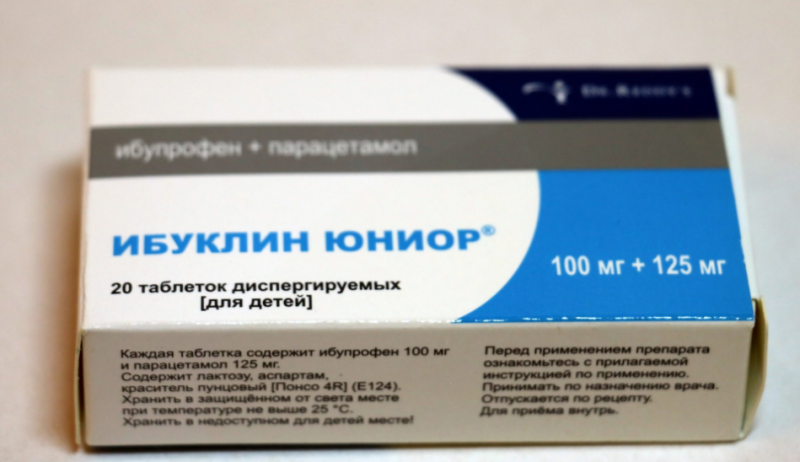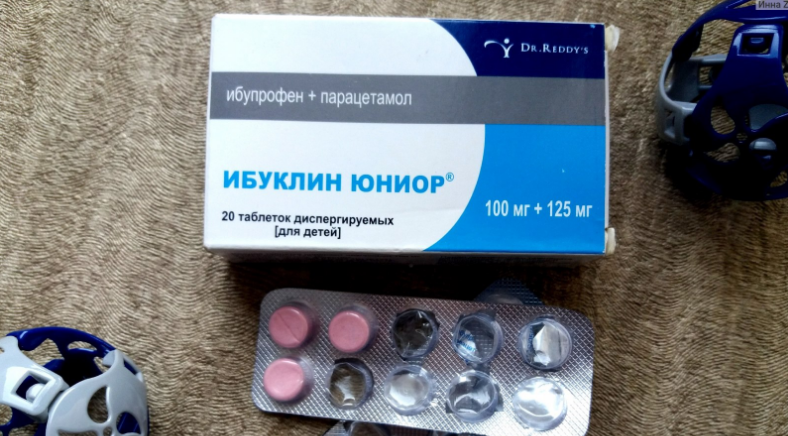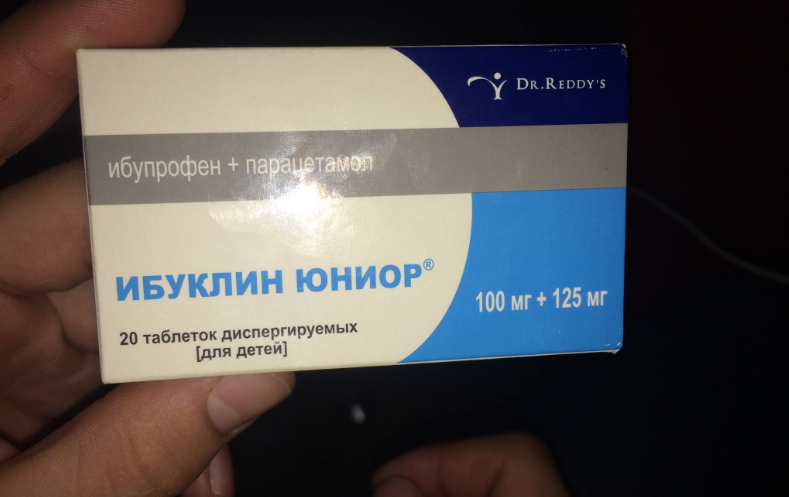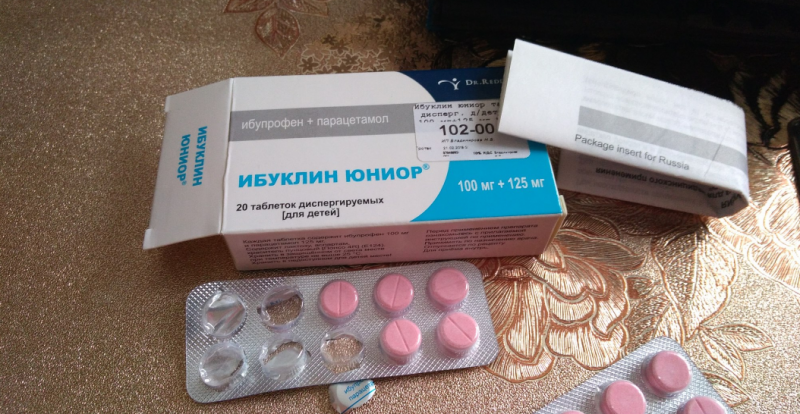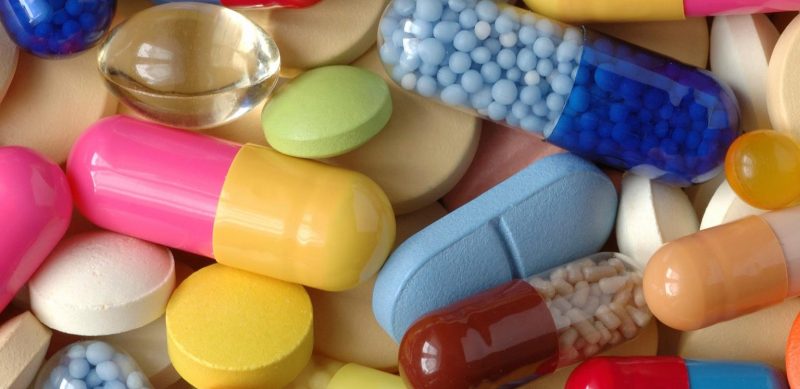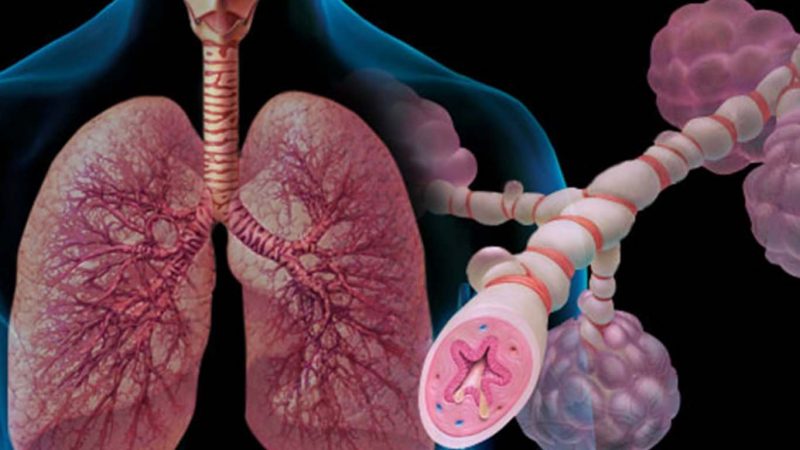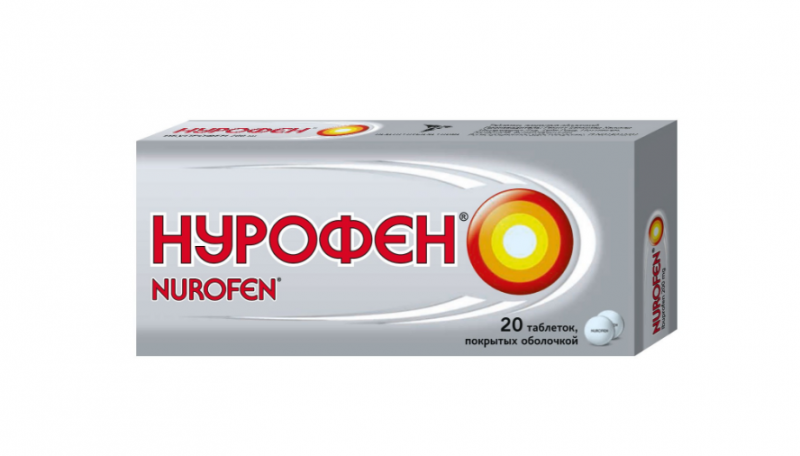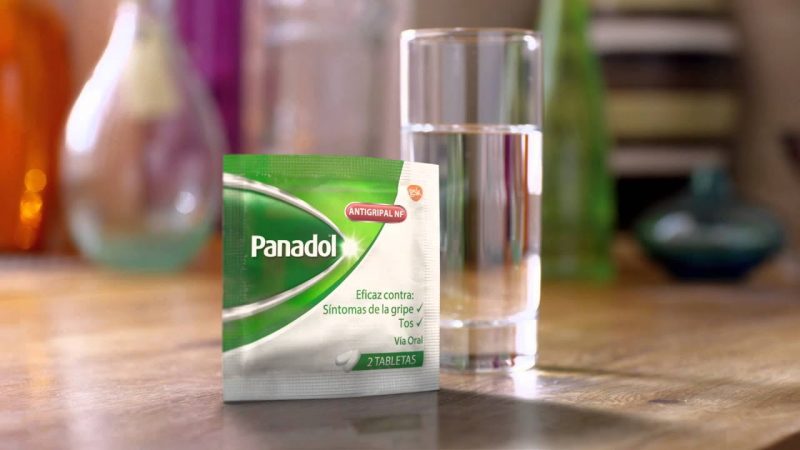With the development of a viral infection in children, the occurrence of a fever or various pains, Ibuklin Junior is an indispensable and fast-acting remedy. But it is not always harmless to health: such drugs, if used improperly and for prolonged periods, can harm the body.
Material Content:
- 1 Composition, release form and packaging
- 2 Pharmacological action and pharmacokinetics
- 3 What helps Ibuklin Junior
- 4 Age restrictions on admission
- 5 Instructions for use and dosage for children
- 6 Drug interaction
- 7 Special instructions for admission
- 8 Contraindications, side effects and overdose
- 9 Analogs of the drug "Ibuklin Junior"
Composition, release form and packaging
In the antipyretic and anti-inflammatory agent "Ibuklin Junior" contains 2 active substances: paracetamol and ibuprofen (125 and 100 mg per tablet, respectively).
Also in the instructions, the presence of components with a secondary value is noted:
- corn starch;
- lactose;
- dye;
- talc;
- glycerol;
- flavorings;
- aspartame;
- peppermint oil.
"Ibuklin Junior" for children is available in the form of dispersible tablets, painted in pink, 10 pcs. in every blister. Packaging - cardboard, the number of blisters that may be in it: 1, 2, 20 pcs. (in a set - a spoon).
Pharmacological action and pharmacokinetics
The drug is combined: ibuprofen (NSAIDs) has analgesic and anti-inflammatory properties, relieves fever, and paracetamol has only analgesic and antipyretic effects (it almost does not show anti-inflammatory properties).
Ibuprofen is rapidly absorbed from the digestive tract. Concentration becomes maximum after 1-2 hours. Once in the joints, it accumulates in their cavity. The substance is excreted by the kidneys, another way out is with bile.
Paracetamol is also characterized by high absorption. It takes 1-2 hours to reach maximum concentration. Metabolism of about 95% of paracetamol occurs in the liver. The substance is excreted by the kidneys.
What helps Ibuklin Junior
The drug alleviates the condition of children if they have:
- fever;
- toothache;
- pain against the background of injuries;
- headache.
Children's "Ibuklin" can be used as an adjuvant for tracheitis, tonsillitis, laryngitis, sinusitis, pharyngitis.
Age restrictions on admission
The drug is recommended for patients aged 3-12 years.
But Ibuklin Junior tablets can be taken by children over 12 years old and even adults.
Instructions for use and dosage for children
Children 3-6 years old are allowed to take 3 tablets per day; for patients 6-12 years old, the maximum number is 6 tablets.
The time interval between doses should be more than 4 hours. If the patient has impaired kidney or liver function, the intervals are increased to 8 hours.
Before taking the tablet is dissolved in 1 tsp. water.
Drug interaction
It is undesirable to use the drug in parallel with acetylsalicylic acid - ibuprofen will reduce its anti-inflammatory effect.
It is not recommended to combine antipyretic with ethanol and hormonal preparations containing GCS - ulcerative lesions of the gastrointestinal tract may occur.
Taking caffeine will enhance the analgesic effect characteristic of ibuprofen.
The effect of antihypertensive drugs is weakened by the combination of ibuprofen with paracetamol.
The hypoglycemic effect of insulin will be enhanced in the presence of the Ibuklin Junior active ingredients.
The active substances of the antipyretic drug will less effectively affect the body while using cholestyramine, antacids.
Special instructions for admission
It is undesirable to take the medicine for more than 5 days in a row, so as not to provoke the development of complications. Taking self-increased doses can cause inflammation in the stomach.
Patients suffering from infectious diseases should drink tablets with caution - the drug can mask the symptoms, as a result, the doctor will not be able to make the correct diagnosis.
If indirect anticoagulants are taken at the same time, regular monitoring is necessary to monitor if blood clotting has worsened.
Contraindications, side effects and overdose
All contraindications are divided into 2 groups: relative and absolute.
The first group includes:
- anemia and leukopenia of unknown nature;
- colitis;
- nephrotic syndrome;
- bronchial asthma;
- peptic ulcer;
- gastritis;
- renal failure, hepatic;
- arterial hypertension;
- enteritis;
- chronic heart failure.
Absolute contraindications are presented:
- bleeding of any origin;
- problems with the optic nerve;
- bleeding disorders;
- hepatic, renal pathologies;
- sensitivity to composition;
- aspirin asthma;
- lack of glucose-6-phosphate dehydrogenase.
Options for possible side effects:
- the spread of allergic skin rashes;
- disruptions in the hematopoietic system, manifested in the form of leukopenia, thrombocytopenia, neutropenia, agranulocytosis;
- digestive disorders (dyspepsia).
Overdose manifestations:
- stomach pain, accompanied by vomiting, diarrhea;
- drop in blood pressure;
- acute renal failure;
- state of inhibition, drowsiness;
- respiratory arrest;
- headache;
- tachycardia;
- noise in ears;
- depression;
- coma.
Analogs of the drug "Ibuklin Junior"
Analogs of "Ibuklin Junior" - pharmaceuticals that reduce the temperature and relieve pain. They usually contain one of the substances - ibuprofen or paracetamol.
Temperature tablets for children with ibuprofen: Nurofen and Ibuprofen.They are used for the same indications that are noted in the instructions for the drug "Ibuklin Junior".
The recommended dosage for Nurofen: patients 6-18 years old, as well as adults - 1 tablet up to 4 times a day (only children with a body weight of 20 kg or more can take the drug). Between receptions withstand time intervals of 6 hours.
Contraindications are:
- exacerbation of ulcerative lesions, mainly in the digestive system;
- arterial hypertension;
- heart failure;
- intolerance to components;
- diseases associated with impaired blood coagulation.
Ibuprofen tablets can be given to a child of 6 years of age, but provided that the body weight has reached 20 kg.
Contraindications:
- intolerance to the active substance and auxiliary components;
- bleeding disorders;
- pathology of the kidneys;
- liver disease.
Possible signs of adverse events:
- violation of the digestive system - heartburn, diarrhea, pain, vomiting;
- sleep problems, anxiety, headaches, hearing loss, vision, irritability;
- allergic reactions, starting with rashes and ending with bronchospasm, Quincke's edema;
- anemia, a decrease in the number of platelets or leukocytes.
In rare cases, a medicine can adversely affect the functioning of vital organs.
The consequences of an overdose look like nausea, abdominal pain, lethargy, headache, vomiting, so you need to immediately treat to eliminate the symptoms.
Instructions for use "Ibuprofen" contains information on the recommended dosage:
- 6-12 years: 1 tablet up to 4 times a day (intervals between doses - 6 hours);
- from 12 years: 1 tablet at a time, no more than 4 pcs. per day. Maximum daily allowance: 6 tablets.
Children from 6 years old are allowed to take a tablet drug “Panadol” based on paracetamol. It helps to reduce pain and lower fever, but is contraindicated in case of intolerance to the components.
Relative contraindications are:
- viral hepatitis;
- renal failure;
- elevated bilirubin level;
- liver failure, severe liver disease;
- glucose-6-phosphate dehydrogenase deficiency.
In rare cases, treatment proceeds with the appearance of undesirable effects:
- the development of anemia, thrombocytopenia, methemoglobinemia;
- the occurrence of bacteria in the urine;
- renal colic, inflammation of the kidney tissue;
- allergic reactions (mainly rashes on the skin).
When taking adhere to the dosage indicated in the instructions:
- 6-9 years: ½ tablets no more than 4 times a day. Time intervals - at least 4 hours. 2 tablets are allowed per day;
- 9-12 years: 1 pc. - 4 times a day. The daily norm is no more than 4 tablets;
- patients older than 12 years: up to 2 tablets at a time, 4 times a day. The maximum allowable amount is 8 pcs.
Duration of admission is up to 5 days.
For Paracetamol in tablets, the indications are:
- fever against a background of viral infections;
- various pains (muscle, tooth, head).
Reception is contraindicated in:
- intolerance to components, acetylsalicylic acid and other NSAIDs;
- hyperkalemia
- renal, liver failure (severe course);
- digestive diseases (especially with peptic ulcer, bleeding).
Children who are under 2 years old should not use pills.
To choose the right dose, they are guided by the child’s body weight: 10 mg of medicine per 1 kg of weight. If the patient weighs 10 kg, at one time he can take no more than 100 mg of the drug (1/2 tablet, if the drug is available in a dosage of 200 mg, or 1 tablet 100 mg).
The next appointment will be possible after 4-6 hours. Up to 4 receptions per day. Patients under 5 years old are not recommended to give paracetamol more than 2 times a day.
It is forbidden to take other drugs containing the same active component (paracetamol) at the same time as Paracetamol and Panadol.In no case should you allow an overdose of such drugs.
Using antipyretic and analgesics, it should be remembered that they can only relieve symptoms - such drugs will not be able to accelerate the healing process.


